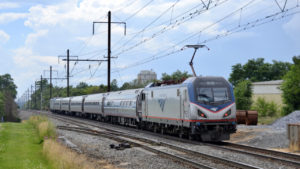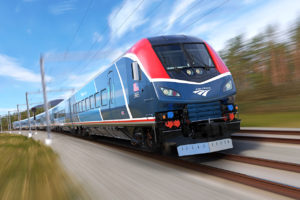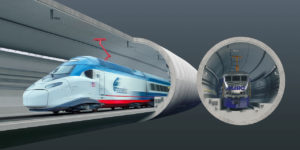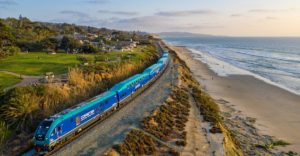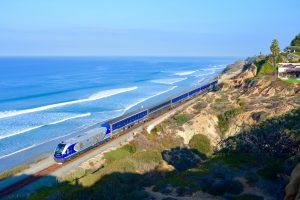NTSB finds inadequate planning, training led to fatal Amtrak derailment
Written by Kyra Senese, Managing Editor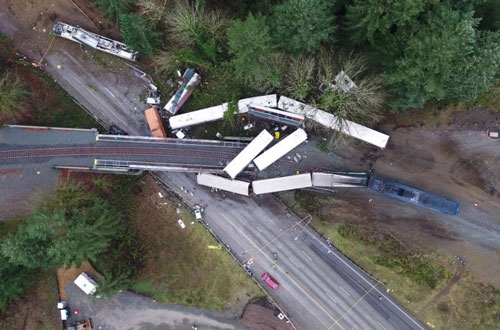
The National Transportation Safety Board (NTSB) announced May 21 its stance on the probable cause of the fatal, Dec. 18, 2017, Amtrak accident near DuPont, Wash., after a Board meeting held on the topic.
The NTSB cited a failure to provide an effective mitigation method for a hazardous curve and inadequate training of a locomotive engineer as causes that led to the overspeed derailment of the Amtrak passenger train that hurtled off of a railroad bridge and onto a busy highway.
On the morning of Dec. 18, 2017, Amtrak Cascades train 501, on its inaugural run on the Point Defiance Bypass between Seattle and Portland, Ore., derailed on an overpass as it entered a 30-mph curve at approximately 78 mph, NTSB recalled in a statement.
The lead locomotive and four rail cars fell onto Interstate 5, where they struck eight passenger vehicles. Three of the 77 train passengers were killed in the accident, and injuries were sustained by 57 passengers and crew members aboard the train and eight people who had been traveling on the highway.
“This is the third fatal overspeed passenger train derailment the NTSB has investigated since 2013,” said NTSB Chairman Robert Sumwalt.
“All three have the same thing in common: each could have been prevented by Positive Train Control. This is why Positive Train Control is on the NTSB’s 2019-2020 Most Wanted List of Transportation Safety Improvements,” Sumwalt said. “The deadline for full implementation of PTC is rapidly approaching and the NTSB continues to advocate for the expedited implementation of this life-saving technology.”
The NTSB said during a May 21 public meeting that the Central Puget Sound Regional Transit Authority (Sound Transit) failed to adequately address the hazard associated with a curve that required the train to slow from 79 mph to 30 mph in order to safely traverse it.
NTSB also noted that Positive Train Control had not been implemented for the track at the curve.
Although the engineer on duty was somewhat familiar with the route from observational rides and three training runs, it was the first time he operated the train on that route in revenue service. Additionally, NTSB reports that the engineer was operating a locomotive with which he had very little experience.
The NTSB determined the engineer had insufficient training on both the route and the equipment.
Amtrak had equipped the locomotive with an inward-facing image recorder that provided investigators with both a visual and audio recording of crewmember activities during the accident even though this device was not required by the Federal Railroad Administration (FRA).
Officials said the recording allowed investigators to rebuild a second-by-second depiction of the actions and words of the engineer and the conductor throughout the trip.
“The engineer and conductor engaged in brief conversations throughout the trip; as the train passed the only sign warning of a speed reduction prior to the accident curve, the engineer was not engaged in conversation and was looking ahead,” the NTSB said in a statement.
The engineer told investigators that he did not see the speed reduction sign. The recordings also show that he took no action to reduce the train’s speed before the derailment. Investigators concluded the brief conversations between the engineer and the conductor did not distract them from their duties or their abilities to identify the speed reduction sign.
Investigators also found the trainset involved in the crash—which did not meet current crashworthiness standards and was only permitted to operate through a grandfathering agreement with the FRA—was structurally vulnerable to high-energy derailments or collisions.
Responsibility for the planning, safety and oversight of the Cascades operation involved several organizations, including Amtrak, the Washington State Department of Transportation (WSDOT), the FRA and Sound Transit.
Investigators also concluded that there was “a general sense that none of the participants fully understood the scope of their roles and responsibilities as they pertained to the safe operation of the service, which allowed critical safety areas to be unaddressed.”
Following the investigation, the NTSB issued a total of 26 safety recommendations to the FRA, the WSDOT, Oregon Department of Transportation, Sound Transit and the United States Department of Defense. In addition, the NTSB reiterated three recommendations to the FRA.
NTSB said the final report regarding the fatal derailment will be made available within several weeks. An abstract of the report that includes findings, probable cause and safety recommendations is available here.
Additional materials, including Sumwalt’s opening and closing statements and investigator presentations, are available here. The accident docket is available to view at this link.

